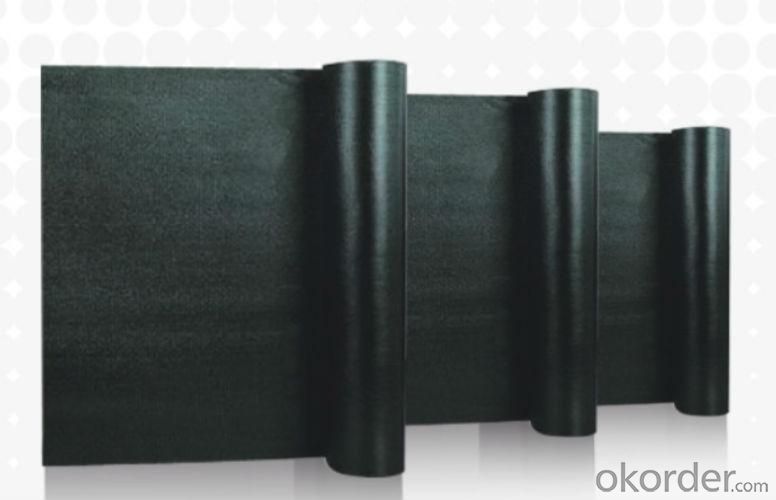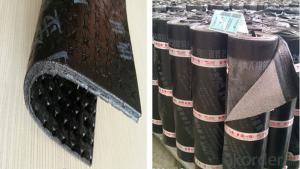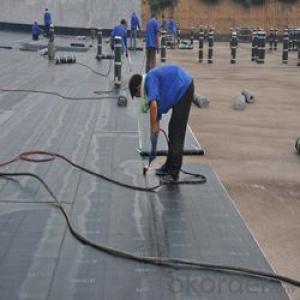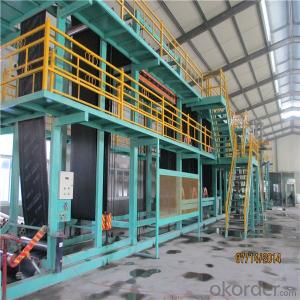SBS Bitumen Waterproof Membrane
- Loading Port:
- China Main Port
- Payment Terms:
- TT or LC
- Min Order Qty:
- 2000 M2 m²
- Supply Capability:
- ONE WEEK PER CONTAINE m²/month
OKorder Service Pledge
OKorder Financial Service
You Might Also Like
Detailed Specification for SBS Waterproofing Membrane:
|
Item |
SBS modified bitumen waterproof membrane | ||||
|
Grade |
First |
Second | |||
|
Base |
PY |
G | |||
|
Cover |
PE |
S |
M |
Al | |
|
Thickness |
2/3/4mm | ||||
|
Color |
Black PE film |
Yellow/green/other Fine Sand |
Grey/Green/other MineralGrains/Flakes |
Aluminium Foil | |
|
Notes |
PY------Polyester Base G-------Glassfibre Base | ||||
SBS/APP modified bitumen waterproofing membrane is made by soaking the base in bitumen,or thermoplas ticityelastomer(such as styrene butadiene-SBS), or thermoplastics (such as atactic polypropylene-APP,APAO,APAL) modified bitumen, then covering double faces with elastomer(SBS) or thermoplastics( APP, APAO,APAL) modified bitumen, and last finiishing the upward face with fine sands, mineral slates(or grains) or polythene membrane ect, while downward face with fine sands or polythene membrane.
Pictures for SBS Waterproof Membrane:
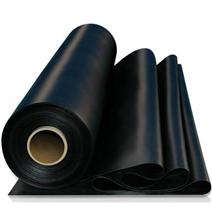
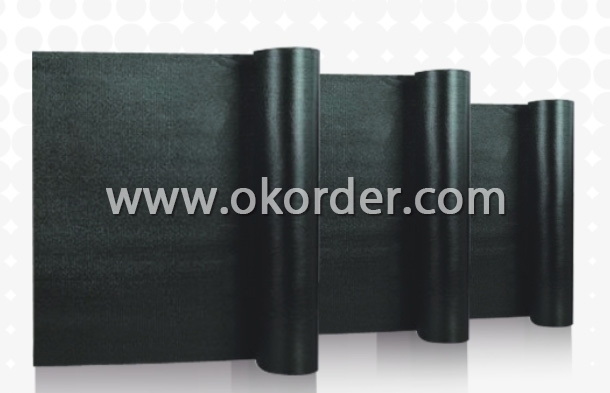
- Q: Can a waterproofing membrane be used in government or municipal projects?
- Absolutely, government or municipal projects can most certainly utilize a waterproofing membrane. It is, in fact, a vital element frequently employed in the construction or refurbishment of diverse infrastructure projects like roads, bridges, tunnels, and buildings. The purpose of waterproofing membranes is to thwart water infiltration, which may inflict harm upon the structure and undermine its stability. By incorporating a waterproofing membrane, government and municipal projects can guarantee the endurance and robustness of their infrastructure, thereby diminishing the necessity for costly repairs or replacements in the future. Furthermore, these membranes also contribute to energy efficiency by preventing moisture intrusion, thereby reducing the potential for mold growth and enhancing insulation properties. All in all, it is highly recommended to integrate a waterproofing membrane in government or municipal projects to elevate the lifespan and functionality of the infrastructure.
- Q: Does a waterproofing membrane require any specific safety precautions during installation?
- Yes, installing a waterproofing membrane does require specific safety precautions. These may include wearing protective clothing, such as gloves and goggles, to prevent contact with chemicals or materials that may be harmful. It is important to ensure proper ventilation in the installation area to minimize exposure to potentially harmful fumes or vapors. Additionally, following manufacturer's instructions, using proper tools and equipment, and working in a well-organized manner can help prevent accidents or injuries during the installation process.
- Q: Can a waterproofing membrane be applied to roofing systems?
- Yes, a waterproofing membrane can be applied to roofing systems. Waterproofing membranes are commonly used in roofing to provide an additional layer of protection against water and moisture infiltration. These membranes are typically made of synthetic materials such as PVC or EPDM and are designed to be durable, flexible, and resistant to environmental factors such as UV radiation and temperature fluctuations. When properly installed, a waterproofing membrane can help to prevent leaks, extend the lifespan of the roof, and protect the underlying structure from water damage. It is important to consult with a professional roofing contractor to determine the most suitable type of waterproofing membrane for a specific roofing system and to ensure proper installation and maintenance.
- Q: Does a waterproofing membrane require any specialized tools or equipment for installation?
- Yes, the installation of a waterproofing membrane typically requires specialized tools and equipment. Some of the common tools and equipment used for installation include a trowel or roller for spreading the membrane, a utility knife for cutting and shaping the membrane, a heat gun or propane torch for activating and adhering the membrane, a seam roller for ensuring proper bonding of seams, and a caulking gun for applying sealant around penetrations and edges. Additionally, depending on the specific type of waterproofing membrane being installed, other tools such as a primer, bonding adhesive, or specialized membrane fasteners may be required. It is important to consult the manufacturer's installation guidelines to ensure the proper tools and equipment are used for a successful installation.
- Q: How does a waterproofing membrane withstand temperature changes?
- A waterproofing membrane is designed to withstand temperature changes by being made from materials that can expand and contract without losing their properties. These materials are typically flexible and have a high tolerance for temperature fluctuations, allowing them to maintain their waterproofing capabilities even in extreme weather conditions. Additionally, the membrane's installation process often involves proper sealing and adhesion techniques, ensuring that it remains intact and unaffected by temperature changes.
- Q: Can a waterproofing membrane be used for swimming pool decks and patios?
- Swimming pool decks and patios are commonly subjected to water exposure, which can cause damage. To counter this, a waterproofing membrane can be utilized. This membrane serves as a shield to prevent water penetration and safeguard the underlying structure. Whether it's due to splashing or rainfall, these areas are prone to water-related issues like cracking, mold growth, and deterioration. By applying a waterproofing membrane, you can effectively protect your pool deck or patio from such problems. This protective barrier hinders water from seeping into the concrete or other materials, thus prolonging the lifespan of these surfaces. To guarantee optimum performance and durability, it is crucial to select a high-quality, outdoor-specific waterproofing membrane.
- Q: Can waterproofing membranes be used on shower walls?
- Indeed, waterproofing membranes are suitable for application on shower walls. They play a crucial role in shower construction by preventing water leakage and safeguarding adjacent areas from potential harm. These membranes act as a barrier, effectively blocking water infiltration into the shower's structural components. Typically, they are installed behind the tile or other wall coverings, serving as an additional protective layer. Designed to be pliable, long-lasting, and moisture-resistant, waterproofing membranes guarantee the preservation of watertight shower walls and safeguard against any water-related harm.
- Q: Can a waterproofing membrane be applied to curved surfaces?
- Indeed, it is possible to apply a waterproofing membrane to surfaces that have curves. Specifically designed methods and products are accessible for adhering to and covering such surfaces. These membranes possess flexibility, allowing them to be molded or stretched in order to conform to the shape of the curved surface, guaranteeing a tight and secure seal. While the application process may demand additional care and attention to ensure appropriate adhesion and coverage, the effective waterproofing of curved surfaces is certainly achievable.
- Q: Can a waterproofing membrane be used for a garden pond liner?
- Yes, a waterproofing membrane can be used for a garden pond liner. A waterproofing membrane is designed to prevent water from penetrating through it, making it an ideal choice for creating a watertight barrier in a garden pond. It can effectively prevent leaks and ensure that the water remains contained within the pond. Additionally, waterproofing membranes are typically durable and resistant to UV rays, chemicals, and punctures, which are all important factors to consider when selecting a material for a pond liner. However, it is crucial to ensure that the waterproofing membrane chosen is specifically designed for use in ponds and is safe for aquatic life.
- Q: Can waterproofing membranes be applied on roofs?
- Yes, waterproofing membranes can be applied on roofs. These membranes are specifically designed to provide a protective layer against water infiltration and are commonly used in the construction industry to waterproof various types of roofs, including flat roofs, pitched roofs, and sloped roofs.
1. Manufacturer Overview
| Location | Beijing, China |
| Year Established | 1998 |
| Annual Output Value | Above US$ 30 Million |
| Main Markets | Mid East; Eastern Europe; North America; Southeast Asia |
| Company Certifications | ISO 9001 |
2. Manufacturer Certificates
| a) Certification Name | |
| Range | |
| Reference | |
| Validity Period |
3. Manufacturer Capability
| a) Trade Capacity | |
| Nearest Port | Tianjin |
| Export Percentage | 41% - 50% |
| No.of Employees in Trade Department | Above 50 People |
| Language Spoken: | English; Chinese |
| b) Factory Information | |
| Factory Size: | Above 600,000 square meters |
| No. of Production Lines | Above 10 |
| Contract Manufacturing | OEM Service Offered; Design Service Offered |
| Product Price Range | Negotiated |
Send your message to us
SBS Bitumen Waterproof Membrane
- Loading Port:
- China Main Port
- Payment Terms:
- TT or LC
- Min Order Qty:
- 2000 M2 m²
- Supply Capability:
- ONE WEEK PER CONTAINE m²/month
OKorder Service Pledge
OKorder Financial Service
Similar products
Hot products
Hot Searches
Related keywords



